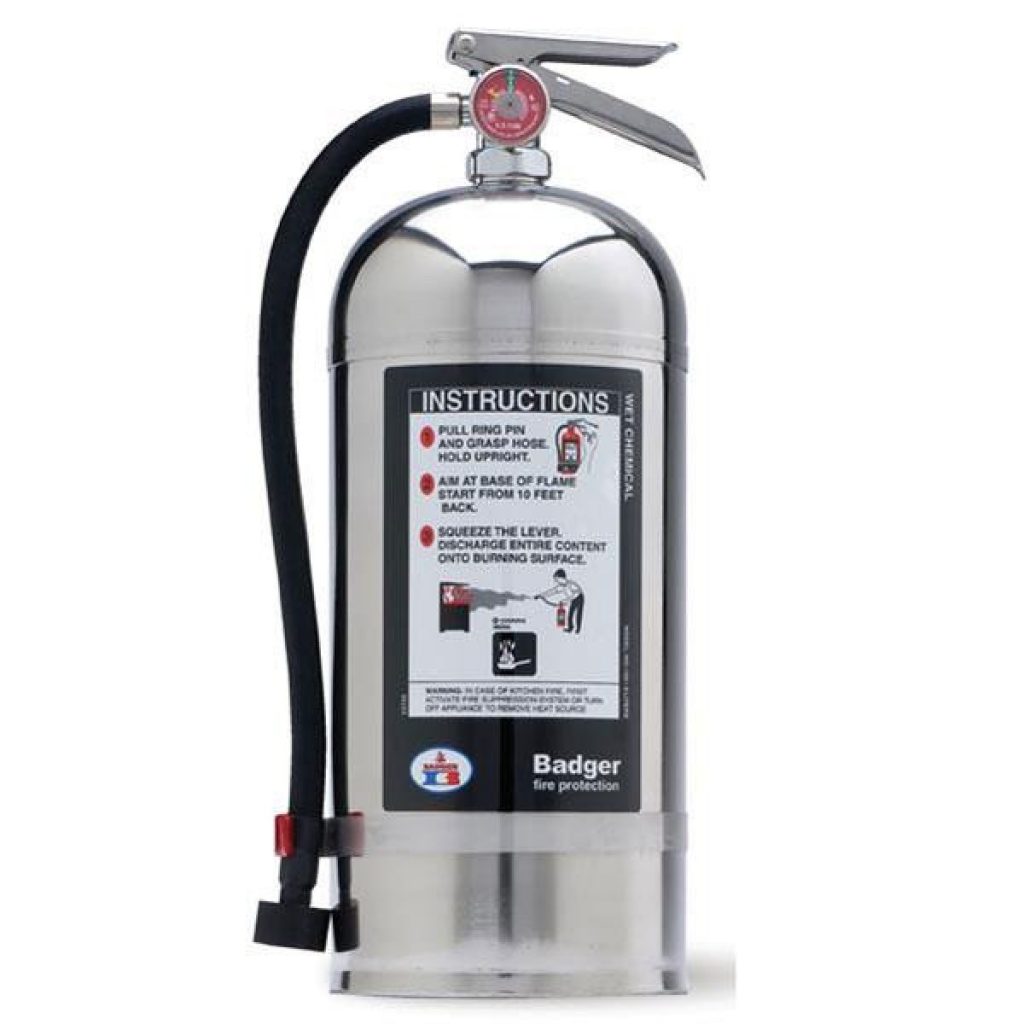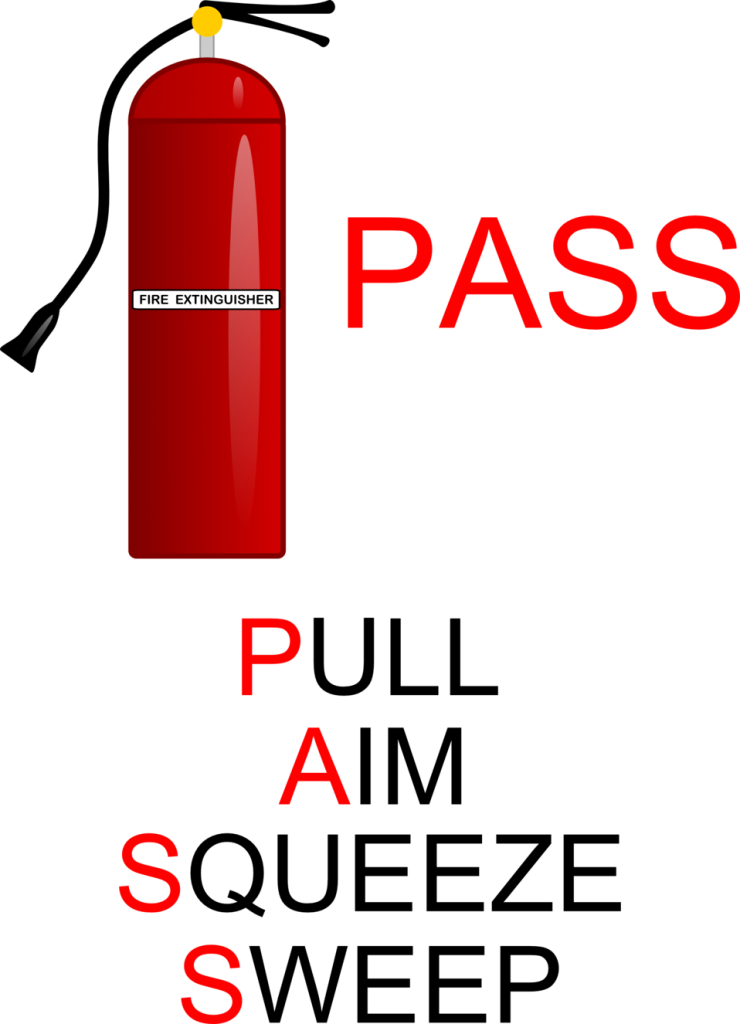We’ve examined the importance of fire extinguishers in a few of our posts up to this point. Last week’s Kitchen Security Measures for Your Home showed how adding extinguishers to especially vulnerable areas of your home can help improve fire safety. In that post, we also briefly touched on the idea that different extinguishers fight different types of fires. Extinguishers are grouped into “classes” that coincide with the type, or “class,” or fires they are meant to extinguish. In this week’s post, we dive into fully explaining the various fire extinguisher classes. Furthermore, we will also share some basic “best practices” for fire extinguisher use and maintenance.
We will begin by defining the different types of fires. The various fire extinguisher classes develop from the types of fires that they put out. From there, we will examine both common and specialty extinguishers. Common fire extinguisher classes will fit most applications. However, we also offer extinguishers for customers with more unique circumstances as well. Finally, we’ll look at some overall tips for fire extinguisher use and maintenance. Obviously, having these devices handy only helps if you use them correctly and they’ve been well-maintained to ensure proper functionality. Let’s begin by taking a look at each of the five types of fires.

Studying up on the different classes of fire can help you pick the right types of extinguishers for your own application.
Getting Educated About Fire Designations
One of the most important steps in selecting the right fire extinguisher classes for your application involves identifying the most likely type of fire you could experience. The cause of a fire greatly determines the best course of action in fighting it. Let’s take a look at the five different fire designations. From there, we’ll take a look at the best type of extinguisher to fight each type of fire.
Class A
This class of fire involves flammable solids. Wood, paper, cloth, and rubber catching fire would all constitute a fire of this class. For example, a campfire is a common example of a Class A fire. Lightning strikes and fallen candles provide example of inadvertent Class A fires. Water provides a perfect solution to this class of fire. Later on, we’ll also examine types of extinguishers that can douse a Class A blaze. For now, let’s look at another common type of fire.
Class B
The next class of fires get their fuel from flammable or combustible liquids. For example, oil, gasoline, paint, and propane could all start a Class B fire. However, cooking oil or grease fires do not generally fit into this category. We’ll get into those specific exceptions a bit later. These fires will spread if you pour water on them, so we encourage smothering them instead. Of course, if available, using the proper extinguisher to fight these fires is always preferable. Now, let’s take a closer look at another common fire designation.
Class C
Energized electrical fires make up the Class C fire designation. What do we mean by an “energized” electrical fire? We’re glad you asked! This means that the source of a fire must have an active source of electrical power. For example, a computer plugged into an outlet would create this type of fire if it catches flame. However, an unplugged computer would create a Class A fire if set ablaze. Old wiring and frayed cords may start a Class C fire. If possible, we recommend removing power to the device in question to combat this type of blaze. As with the other fires listed here, specific types of extinguishers can also do the job. Now, let’s take a look at a far less common type of fire than the ones discussed thus far.
Class D
One of the rarest types of fires, Class D fires involve the ignition of metals. Most Class D fires involve magnesium or titanium. However, aluminum and sodium are also to blame for some of these fires as well. Class D fires rarely take place in homes. Instead, industrial environments where employees carry out metal work make the most likely scene for these fires. The specific extinguisher designed for this type of fire makes up the best solution if one does occur. Let’s take a look at the last fire designation, then look at the fire extinguisher classes that fight each of these types of fires.
Class K

Class K extinguishers, such as this one made by Badger, can douse tricky kitchen fires that no other type of extinguisher could extinguish.
The last class of fire relates to blazes involving cooking oils, grease, or animal fat. You may remember that even though Class B fires include most liquids, cooking-related liquids were left out. That’s because Class K fires encompass these kitchen-related incidents. Since these fires often start in pans, turning off the pan’s heating source (stove, oven, grill, etc.) and removing the pan can help combat these fires. As with every other type of fire on this list, using the proper extinguisher can help as well. With that, let’s take a closer look at some individual fire extinguisher classes.
Types of Extinguishers and Their Uses
Just as we separate fires into separate categories, fire extinguisher classes remain separate and unique as well. However, overlap does exist between the different types of extinguishers. Different extinguishers use different solutions to fight fires. The ingredients inside the extinguisher determines which type(s) of fires it can effectively fight. In this section, we’ll discuss the unique fire extinguishers classes and how they put out fires. We’ll start with a look at some of the most common types of extinguishers. From there, we’ll look at some less common options for unique situations. Let’s begin with a look at the fire extinguisher classes that you would find in the most common settings.
Extinguishers for Common Fires
The most common fire extinguishers class is designed to fight Class A, B, or C fires. We call this an “ABC” extinguisher. Most ABC extinguishers use a dry chemical to put out the three most common types of fires. While versatile, these extinguishers often leave behind a mess after use. For this reason, some users may have reason to get a little more specific with their extinguisher selection. Class A extinguishers, for example, put out only class A fires. These extinguishers use water to extinguish flames. Homeowners or frequent campers often have Class A extinguishers on hand to douse campfires without spraying chemicals.
Likewise, some people purchase Class BC extinguishers. This class of extinguishers of uses carbon dioxide to fight Class B or C fires. This allows users to extinguish an electrical or liquid-based fire using a less corrosive method than a common ABC extinguisher would provide. Computer server rooms often make a great spot for a Class BC extinguisher. Certain specific locations also require Class AC extinguishers that use a de-ionized water mist to fight class A or C fires. These are required in settings where both Class A and C protection is required in an environment that cannot withstand the chemicals or fumes of any other types of Class ABC extinguisher.
Halotron fire extinguishers provide one more option for fighting Class A, B, and C fires. These extinguishers use an extinguishing agent known as “Halotron 1” to fight different types of fires. You can find Halotron extinguishers that fight Class A, B, and C fires, or just Class B and C blazes. These extinguishers can extinguish fires quickly without leaving behind the solid residue caused by most extinguishers. However, Halotron extinguishers also generally carry a heftier price tag than common fire extinguisher classes as well. Now that we’ve looked at fighting the most common fires, let’s look at some specialty fire extinguisher classes.
Specialty Extinguishers
The last two types of fires, Class D and Class K, require extinguishers built specifically for fighting them. Class D extinguishers use a dry powder to get the job done. This powder works only on class D fires involving metals. Finally, Class K extinguishers fight those fires started by grease, animal fat, or cooking oils. For this reason, you’ll most likely find them in restaurants. These extinguishers usually have a wet chemical in them designed specifically to fight the rapid pace with which Class K fires spread. In fact, the agent contained in Class K extinguishers turns the oil and fat that fuels Class K fires into soap or a foam. This transition is known as “saponification.” As you can see, fighting unique fires requires fire extinguishers classes with unique attributes! Now, let’s share some general tips regarding extinguisher use and maintenance.

Memorizing the steps of the “PASS” acronym can help you use a fire extinguisher properly if the need ever arises.
General Fire Extinguisher Tips and Best Practices
Of course, choosing the right extinguisher only goes so far. Improper use or maintenance of these fire-fighting devices can cause them to fail when you need them most. For starters, many people think standing right in front of a fire while using an extinguisher provides the best chance of success. In fact, doing so will only utilize a small fraction of an extinguisher’s fan-like spray pattern. Instead, fire the extinguisher from 6-10 feet away. This allows the most effective amount of solution to strike the target.
We also encourage following the “PASS” technique while using a fire extinguisher. “PASS” stands for (1) “Pulling” the pin and breaking the extinguisher’s tamper seal; (2) “Aiming” the extinguisher low, at the base of the fire; (3) “Squeezing” the handle to release the extinguisher’s active ingredients; and (4) “Sweeping” the extinguisher from side to side. Watch the fire to see if it re-ignites. If it does, follow steps 2-4 until the fire goes out for good.
Finally, make sure that you keep your extinguisher inspections up to date. You may remember the concept of annual fire extinguisher inspections from our post on Recognizing Illegal Commercial Security Measures. In that post, we focused on the legal importance of annual extinguisher inspections and maintenance. Passing an annual fire extinguisher exam does indeed constitute an important legal requirement for any business. More importantly, however, it also ensures that extinguishers work when needed. Of course, the underlying purpose of these inspections and maintenance lies in safety, not legality. Keeping up-to-date gives your extinguishers the greatest chance of working if a fire emergency does occur.
Choosing the Right Fire Classes for Your Application
We hope that this post has informed you about the different fire extinguisher classes. We also hope that you have some ideas about what type of extinguishers might benefit you the most. Finally, we also aim to provide readers with valuable extinguisher use and maintenance guidelines for all fire extinguisher types. If you have any questions about the material in this post, we encourage you to contact us. Our fire extinguisher division works with customers every day on fire extinguisher selection, purchasing, and maintenance. Perhaps you have extinguishers in place but wish to make sure you have the proper type and level of protection. Or maybe you’re building an extinguisher plan from scratch and want to make sure you get it right. Either way, we will work with you to create a plan that helps ensure you have the right type of fire extinguisher for the job.
Feature Photo Credit: Mpelletier1 on Wikimedia Commons. Used under the CC BY-SA 3.0 License.
